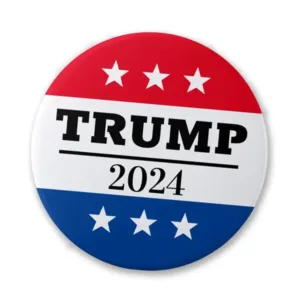US politics is a very difficult topic to be impartial on.
We’ve attempted to present the facts along with their sources. We’ve indicated our assumptions and opinions.
Feel free to comment if you see otherwise. Definitely help us correct any inaccurate fact.
Brand positioning is the foundation of marketing communications. It can even become the driving force behind a brand’s entire marketing mix. But working through a positioning exercise for a toilet bowl cleaner or beard oil isn’t particularly engaging, unless those product categories are remotely close to your own. So here is our take on positioning for a brand with more universal and timely interest, Joseph Robinette Biden Jr and his (presumptive) 2024 Presidential Election campaign. The Joe Biden brand.
Wait—What’s Brand Positioning?
It’s the position your brand occupies in the consumer’s mind, relative to the competitive options. It’s the reason consumers choose your brand over its competitors. Therefore, it must be unique in a way that’s relevant to the consumer. [1]
Situational Analysis
Here’s some brutal simplification of, and best guesses for, the political landscape in America as it relates to the Presidential Election in November, 2024:
- The US is effectively the largest two-party country in the world. [2] An Independent candidate hasn’t won a Presidential Election since George Washington (1789). So, the competitive set for the Joe Biden brand is just one other person, Donald Trump, presumptive official nominee for President for the Republican party.
- In November 2020, Biden won the Presidency against Trump (then the first-term incumbent) by 306/232 in Electoral College votes and 51.3%/46.8% in the popular vote. [3]
- Biden (81 years old) and Trump (78 years old) will be the oldest candidates to ever seek election as US President, as they were in 2020. [4] Both have served one four-year term and are seeking re-election to a second. 75% of Americans think Biden is too old to seek office in 2024, 50% say the same about Trump. [5]
Here is the brutally simplified economic landscape:
- Trump inherited a recovered and improving economy from the eight-year Democratic administration of Barack Obama. See Note 6 for essential details.
- The COVID-19 pandemic hit in the Trump administration’s last year. While you can make the case that Trump did not personally handle the pandemic well, any administration’s economic performance would have been harmed by the first global pandemic in a century. Strong GDP numbers at the end the Trump’s term were really a reflection of recovery from pandemic-induced lows.
- Biden inherited a partially-recovered economy in 2021, but worse than what Trump started with. See Note 7 for essential details. The Biden administration embarked on an extremely ambitious economic policy agenda (the forward-looking Infrastructure & Chips Acts and the reactive Inflation Reduction Act).
- US GDP for the last quarter of 2023 is estimated at 3.3%. [8] Last month’s 3.7% unemployment rate is almost a five-decade low. Annualised 2023 inflation was 3.4%.
- US federal debt increased significantly over both the Trump and Biden administrations, though more so under the former. One would assume that was due to stimulus spending required to mitigate the economic impact of the pandemic, but the biggest increase during Trump’s administration actually came in the year before COVID-19. [9]
We believe the relevant social landscape relevant to this exercise is completely controlled by the political one and that the technological landscape is irrelevant.
 SWAT & Implications
SWAT & Implications
- History, conventional wisdom and current polling tells us that the economy is the most important issue for American voters in this presidential election. Nine months ahead of the election night, the majority (60%) of Americans disapprove of ‘Joe Biden’s’ handling of the economy, [10] despite his administration’s objectively better performance, as summarized here. This is likely due to high inflation during the middle of Biden’s administration. Historically, inflation has been the most important economic variable in a political context. True democracies don’t tolerate high inflation for long before a leader change. Think Iran, Venezuela, Turkey.
- Despite best efforts to project cognitive power and physically vitality, Biden cannot shake voters’ belief that age is a much bigger problem for his re-election than it is for Trump’s.
- Being down in polling, as the incumbent 10 months before a Presidential Election, when both you and your major competitor are technically still presumptive candidates, does not translate to being down on election day. And when you consider poll quality, Biden and Trump are currently in a very close race. [11]
Joe Biden Brand Positioning
The winning team leader.
Rationale
- As President, Trump positioned himself as the Messiah, the Sole Saviour, the Cult Leader. He is definitely not a team player. His administration saw more personnel turnover and turmoil than any in history. The most loyal members of Trump’s team tend to be the Pillow Men, the Rudy Giulianis and the Roger Stones. Trump is the opposite of a dedicated (and winning) team leader.
- Biden as winning team leader blunts the inescapable age issue, which exists even within his own party. In execution, this means the whole team, not just Kamala Harris, needs to play a greater role in the Biden election campaign. One of an incumbent’s few benefits is that they actually have a team in place.
- If US election history repeats itself (and it usually does), American’s perception of the state of the economy will improve significantly by November, 2024. So too will the actual economy. [12] Biden’s campaign should not focus on economics until the American public is ready for that message, and maybe not even then.
Primary Target Group
Voters who identify as Independent and Unaffiliated, currently representing 45% of all American voters. [13]
Rationale
- It appears nothing can move MAGA Republicans (28% of all voters [14]) away from supporting Trump. Biden’s best-case scenario for the rest of Republicans is that a small portion of them choose not to vote in 2024. This will likely offset the small portion of progressive Democratic voters that also abstain. Given all of this, Biden needs to win 54% of the Independent vote to beat Trump by the same margin as he did in 2020. [15]
Caveat
 Joe Biden’s brand positioning as the winning team leader is clearly different than the competition. We think this difference should be very relevant to Americans in the context of the most demanding and important job in the world.
Joe Biden’s brand positioning as the winning team leader is clearly different than the competition. We think this difference should be very relevant to Americans in the context of the most demanding and important job in the world.
America loves its team sports, where a single player, even a super star, cannot carry an entire team on his/her shoulders. America also loves winning, and it’s difficult for anyone outside the MAGA Republican constituency to deny that Biden’s team has mostly done just that since November 5, 2019. At least in the games it has any direct control over. But for people smarter than us about the American psyche—people like Julie Chávez Rodriguez, Biden’s 2024 Campaign Manager—our bet on what the majority of US voters should want in a political leader might seem too risky.
Sadly, current politics in America, and in other democracies including ours, is not ruled by logic and science. On so many issues, we’re losing our desire to be playing on the national team.
Anyway, this is how brand positioning works.
- This is our definition, based on the original work of marketing and business strategy giants:
- Porter, Michael E., “Competitive Advantage”, The Free Press, New York, 1985. Previously referred to here: THE WORLD’S BEST OLYMPIC STRATEGY
- Reis, Al and Trout, Jack “Positioning: The Battle for Your Mind”, McGraw-Hill, 1986.
- India is the world’s largest democracy, but the two major political competitors are actually alliances of many parties.
- There isn’t a direct relationship between Electoral College votes and the popular vote. The reason why is not relevant to this exercise. Winning 270 (or more) Electoral College votes is what wins the Presidency. In 2016, Trump won 304 Electoral College votes but lost the popular vote to Hilary Clinton by 2.1 percentage points.
- Respective ages on November 5, 2024.
- Lange, Jason, “Trump vs. Biden: The rematch many Americans don’t want”, reuters.com, January 25, 2024.
- The Obama administration inherited an economy in the depths of the Great Recession, the worst economic downturn since the Great Depression (which Republicans conveniently forget). When Trump was elected eight years later, GDP was 1.6%, unemployment was 4.7% and the inflation rate was 2.1%. Federal debt increased significantly over the Obama terms (due to stimulus spending against the recession), but was declining as a percentage of GDP.
- GDP for 2020 was -3.5% but +4.0% (annualised) for the last quarter. In January, 2021, unemployment was 6.3% and inflation was 1.4%.
- Annualised estimate released by the Bureau of Economic Analysis.
- The U.S. Department of the Treasury’s Bureau of the Fiscal Service: Understanding the National Debt.
- January 2024 Reuters/Ipsos Core Political, February 1, 2024.
- Authors not credited, “Trump’s lead over Biden may be smaller than it looks”, The Economist, February 4, 2024.
- Authors not credited, “Biden’s chances of re-election are better than they appear”, The Economist, February 1, 2024.
- Current Gallop polling on US voter ‘Party Identity’, found here.
- We’re using this article’s definition of a MAGA Republican as a voter ‘who does not believe the result of the 2020 election’: Bump, Philip, “Figuring out how many ‘MAGA Republicans’ there actually are”, The Washington Post, September 2, 2022.
- We’re assuming Biden needs at least 51.3% of the popular vote for an Electoral College win in November, 2024. All of the Democratic vote (assuming abstentions from both major parties cancel each other out) leaves 24.3% of the popular vote to come from Independents. Independents who are not MAGA Republican-leaning represent 30.2% of the popular vote.






